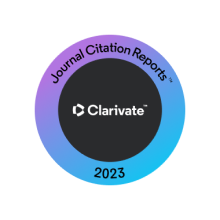Abstract
Objectives
Atrial fibrillation (AF) is a prevalent arrhythmia with significant morbidity. Despite advancements in rhythm control strategies and ablation procedures, approximately 30% of patients with paroxysmal AF experience recurrence, necessitating predictive tools for better patient stratification. This study evaluates the role of left atrial strain (LAS) and left atrial appendage emptying velocity (LAAeV) as predictors of recurrence, aiming to improve procedural outcomes and patient selection.
Methods A prospective cohort of 32 patients with paroxysmal AF and structurally normal hearts, underwent either cryo- or radiofrequency ablation at a single tertiary center. Pre-ablation evaluations included LAS analysis via transthoracic echocardiography and LAAeV measurement via transesophageal echocardiography. Patients were followed for up to one year post-ablation, with recurrence defined as AF episodes lasting >30 seconds beyond a three-month blanking period. Statistical analyses assessed the predictive value of LAS and LAAeV, individually and in combination.
Results AF recurrence occurred in 21.9% of the cohort. Pre-ablation left atrial strain (LAS) values (global LAS ≥33.56%, sensitivity 85.7%, specificity 70%, AUC=81.4%, P < 0.05) and left atrial appendage emptying velocity (LAAeV) (≥42.7 cm/s, sensitivity: 100%, specificity: 87%, AUC = 94%, P < 0.001) were significantly associated with freedom from recurrence. The combination of LAS and LAAeV improved predictive accuracy to 100% sensitivity and 94% specificity (P value
Conclusion Pre-ablation assessment of LAS and LAAeV provides robust predictors of recurrence in patients undergoing AF ablation. Incorporating these metrics into standard pre-procedural evaluation could optimize patient selection and improve ablation outcomes. Further studies are required to validate age-specific cutoff values and evaluate long-term implications.
Recommended Citation
Hammouda, Tarek; Kamel, Omnia; Fares, Emmanuel; Shehata, Ahmed; Baghdady, Yasser; and El-Damaty, Ahmed
(2025)
"Prediction of AF ablation results by advanced left atrial function assessment using strain analysis and left atrial appendage emptying velocity,"
Journal of the Saudi Heart Association: Vol. 37
:
Iss.
3
, Article 11.
Available at: https://doi.org/10.37616/2212-5043.1440
Creative Commons License

This work is licensed under a Creative Commons Attribution-Noncommercial-No Derivative Works 4.0 License.




